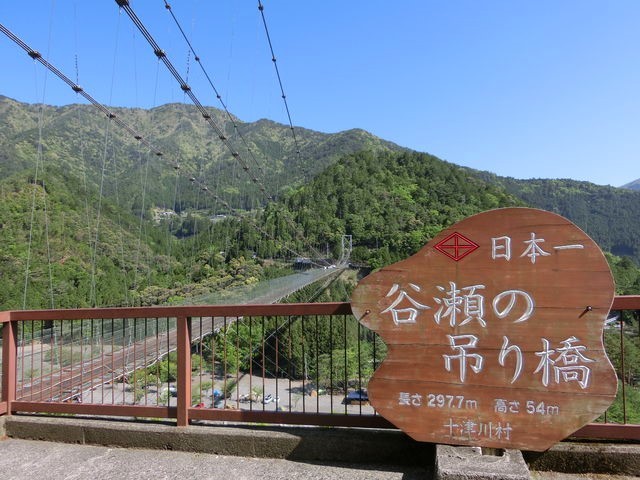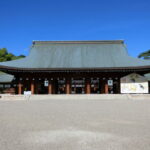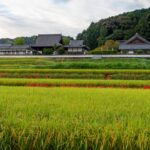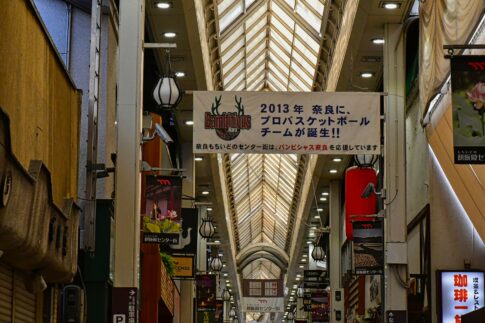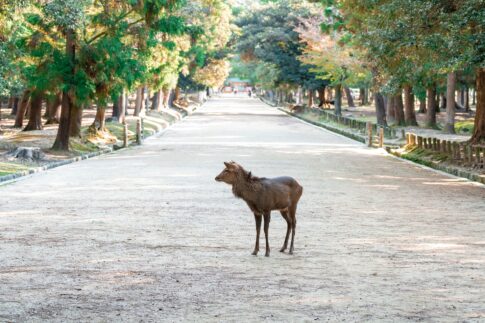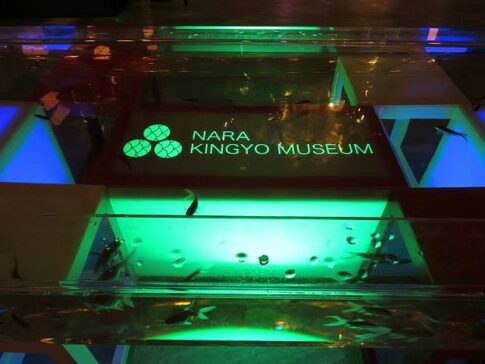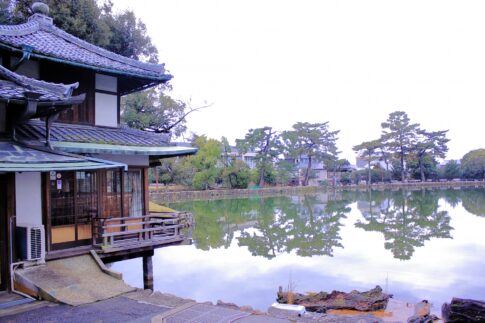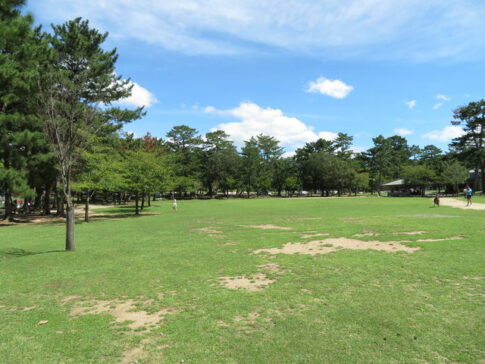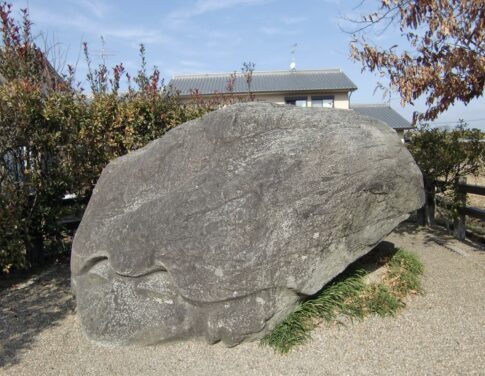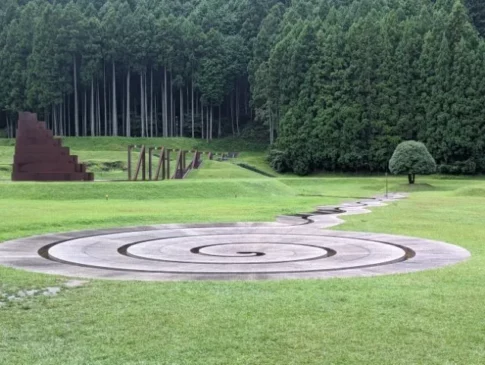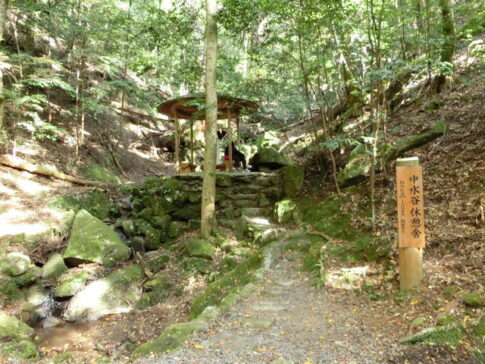Tnize Suspension Bride is located in Totsukawa Village in Nara Prefecture.
When you go to Nara, please visit this exciting place!
What you need to know before visiting Tanize Suspension Bridge
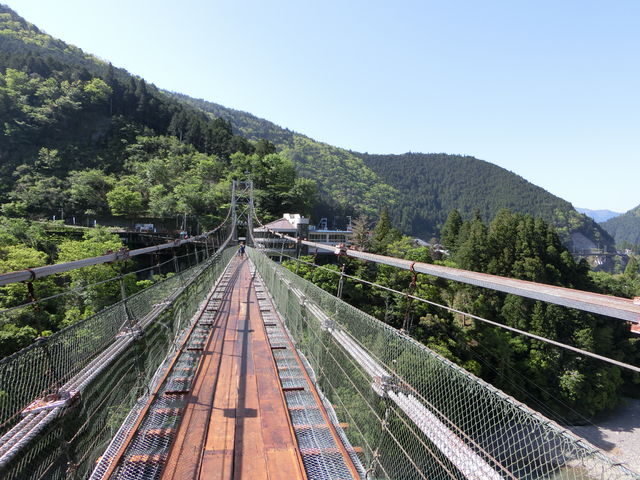
1. Basic Information
At the Tanize Suspension Bridge, you will feel as if you are taking a walk in the air.
The most famous bridge in the village, the “Tanize Suspension Bridge,” was built by the villagers in 1954 and is the longest suspension bridge in Japan for daily use, measuring 297 meters long and 54 meters high.
It takes courage to cross the swinging bridge, but the mountains along the valley and the beautiful river flowing under the bridge offer a view of the Totsukawa River that can only be seen here.
More than 20 people cannot cross the bridge at a time because it is dangerous.
There is a parking lot and souvenir store nearby, as well as a campground under the bridge.
It spans the Totsukawa River (Kumano River) and connects Uenoji in Totsukawa Village with Tanize on the opposite bank.
The bridge is 54 meters (m) above the river level and 297.7 m long, and was built in 1954.
It has been the longest pedestrian suspension bridge in Japan since its completion, but it relinquished its position as Japan’s longest suspension bridge when the Ryujin Suspension Bridge in Ibaraki Prefecture was completed in 1994.
It is said that before the suspension bridge was completed, each time one crossed the river, one had to descend the valley, cross the Maruki Bridge, and crawl up the slope on the other side of the river.
Since the Marubiki Bridge was washed away every time the river flooded, the people of the then Tanize community pooled their resources to complete the 8 million yen suspension bridge, with the cooperation of the village, at a cost of 200,000 to 300,000 yen per household.
In the postwar reconstruction period, when the starting salary for a teacher was 7,800 yen and 10 kilograms of rice cost 765 yen, the villagers contributed 80% of the construction cost to complete this long-desired village road.
Therefore, locals and mail carriers cross the road by business motorcycles, etc., but ordinary tourists are not allowed to cross by bicycles or motorcycles, and must only cross on foot.
In the past, it was also a route for children going to elementary school in the Ueno area.
However, since the elementary school was closed in the spring of 2010, the suspension bridge is now mainly used by tourists.
The bridge has only an 80-centimeter-wide plank in the center, resting on steel wires and 30-centimeter intervals between the planks, and the river and riverbanks far below are clearly visible.
The bridge is a very dangerous one, and there is a warning sign that says, “No more than 20 people should be on the bridge at the same time due to the danger.
Because of its popularity and the great view, the bridge attracts many tourists during the tourist season, and it is dangerous for more than 20 people to cross at a time.
During the busy season, a watchman may be posted and one-way traffic may be restricted from Uenoji to Yanase.
The suspension bridge is open to visitors free of charge all day long, but in this case, visitors must take a temporary toll bus back from the other side of the river.
On September 28, 2021, the bridge was recognized as a Civil Engineering Heritage Site by the Japan Society of Civil Engineers.
2. Folklore of Tanize Suspension Bridge
The “Tanize Suspension Bridge,” which is now one of the most popular tourist attractions in Totsukawa Village, was originally built as a suspension bridge for daily life.
It was built about 60 years ago in 1954 during the postwar reconstruction period.
People in Tanize used to build a wooden bridge over the river, but it was washed away every time the river flooded.
The villagers of Tanize then pooled their resources to build a large suspension bridge with the cooperation of the village, which cost between 200,000 and 300,000 yen per household, an extravagant 8 million yen for the time.
In those days, the starting salary for a teacher was 7,800 yen, and 10 kilograms of rice cost 765 yen.
Things were not as plentiful as they are today.
The people who invested their own money in the Tanize Suspension Bridge helped each other and their hearts were very rich.
Nowadays, this suspension bridge is free of charge for everyone to cross.
Please do not forget the kindness of our ancestors.
Couples who cross this suspension bridge will become good friends.
When the suspension bridge shakes, you will be holding each other’s hands tightly before you know it.
3. Where Totsukawa Village is
Totsukawa Village is located in the southernmost part of Nara Prefecture and is the largest village in Japan.
There is no train service, and transportation is by car or bus.
It takes about one hour from Gojo City in the north to the Tanize Suspension Bridge near the northern border of the village.
From the suspension bridge, it takes about 35 minutes to Yusenchi Onsen, one of the Totsukawa hot spring villages, and another 15 minutes south on National Route 168 to reach Totsukawa Onsen.
From there, a 20-minute drive on Prefectural Route 734 will take you to Kaminyu Onsen.
Totsukawa Village is located in the southernmost part of Nara Prefecture and is the largest and widest village in Japan.
There is no train service, and transportation is by car or bus.
Buses are operated by Nara Kotsu from Kintetsu Yagi Station in Nara Prefecture and JR Shingu Station in Wakayama Prefecture.
The longest bus route in Japan, it takes about 6 hours to travel between Yagi and Shingu.
Village buses operate within the village.Visitors coming from Gojo can see the former Goshin Railway (between Gojo and Shingu, which has not yet been opened). The famous suspension bridge “Tanize no Suspension Bridge” is located in the northern part of the village, about 1 hour south on Route 168 from Gojo City, and about 2 hours north on Route 168 from Shingu City, Wakayama Prefecture.
Approximate driving time: 35 minutes from Tanize Suspension Bridge to Yusenchi Onsen (Totsukawa Village Office and Roadside Station Totsukawa-go), 15 minutes from Yusenchi Onsen to Totsukawa Onsen, and 20 minutes from Totsukawa Onsen to Kamiyu Onsen.
and from Totsukawa Onsen to Kamiyu Onsen is 20 minutes.
Summary
This is one of the most famous Japanese suspension bridges.
You can enjoy with friends, family and lover!
